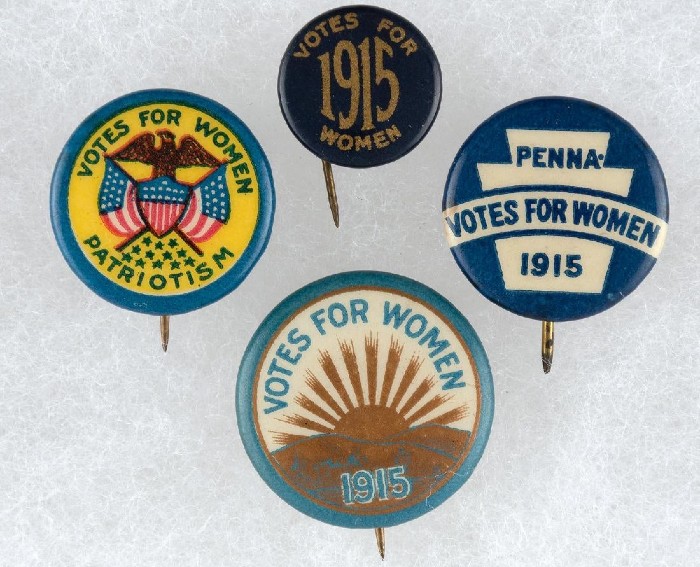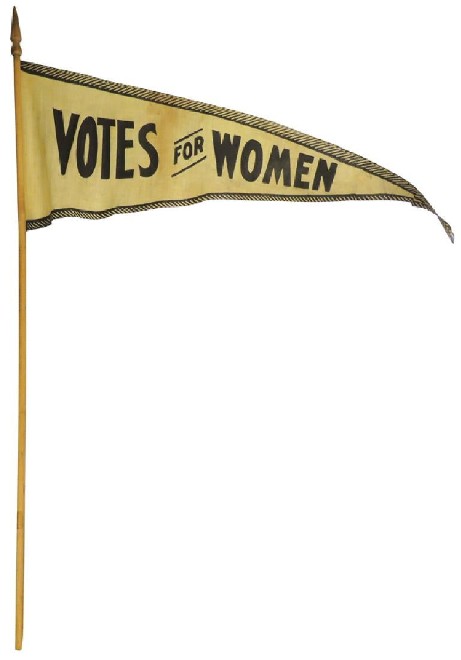
MATTOON, Ill. (AP) – The time span of the effort to secure voting rights for women goes far past the 100 years since it became the law in our country.
That’s the compelling story Carolyn Cloyd said she thinks people should know as the United States sees the 100th anniversary of Constitutional amendment that made it possible.
Cloyd noted that the time from the signing of the Declaration of Independence to what’s considered the birth of the suffrage movement is the same as from the movement’s beginning to the amendment’s adoption.
The effort took long enough that many of the activists who helped it come to fruition didn’t live to see it became a reality, she said.
“They dedicated their lives to it,” Cloyd said. “People don’t realize how difficult it was.”
The story of the suffrage movement that led to the 19th Constitutional Amendment’s ratification in 1920 is the subject of a Coles County Historical Society exhibit.
Cloyd and fellow researcher Steve Thompson put together information panels along with artifacts from the era for the exhibit in the society’s museum in the basement of the Mattoon train depot.
The exhibit’s items range from a tabulation of Coles County election results from November 1920, the first in which women could vote, to a necklace that features the colors associated with the suffrage movement.
Three sisters – Sarah Greider, Anne Lewis and Kerry Fern – lent the necklace to the exhibit. Similarly, there are replicas of plates with “Votes for Women” printed on them, another example of what Cloyd said were souvenirs of the effort.

“There was a lot of merchandise during the suffrage movement,” she said. “It was the way some movements funded their work.”
Information panels tell of how the suffrage movement is thought to have started with the Seneca Falls Convention of 1848, a gathering that addressed voting and other women’s rights issues.
At that point, women were “trying to work in the system” but that soon changed as younger, more educated women became part of the movement, Thompson said.
“That’s where it started to move,” he said. “They took it to the streets.”
He noted that public protests included one in Washington, D.C. As the exhibit shows, it led to arrests and protesters considering themselves political prisoners and conducting hunger strikes.
“That really turns it around,” Thompson said. “Once word got out, noted politicians who’d been on the fence started to go over to suffrage.”
Also, a mannequin dressed in early 1900s women’s clothing is meant to represent Florence Lord, one of the activists who visited Mattoon to conduct rallies in support of the cause.
There are also panels addressing the later stages, including Congressional approval of the amendment in 1919 and the August 1920 vote in Tennessee that gave it enough states’ approval for ratification.
Overall, Cloyd said she hopes the exhibit provides insight to an extensive effort to secure a voice for part of the country’s citizens.
“It’s important for people to understand what created this country,” she said. “This was a huge part of it.”
___
By DAVE FOPAY, Journal Gazette & Times Courier
Copyright 2020 Associated Press. All rights reserved. This material may not be published, broadcast, rewritten, or redistributed.
Source: Mattoon Journal-Gazette & (Charleston) Times-Courier.
AP-WF-03-14-20 0503GMT


